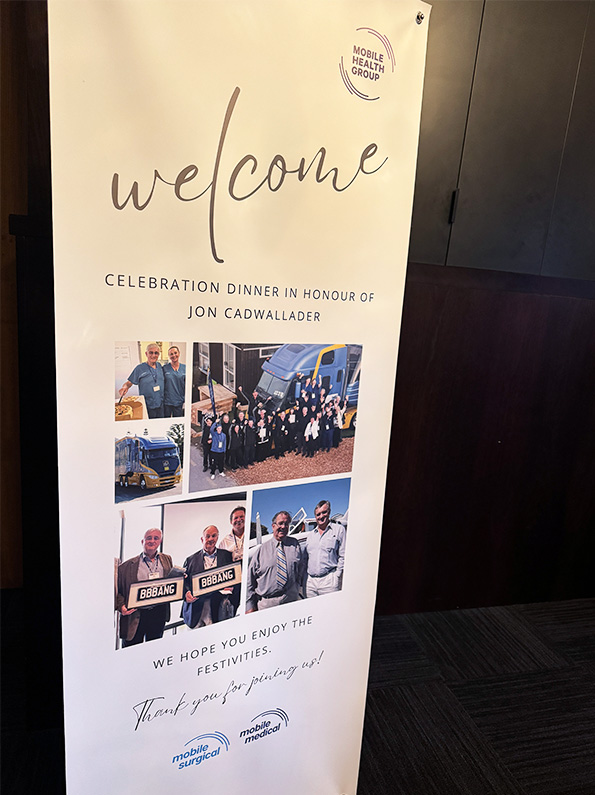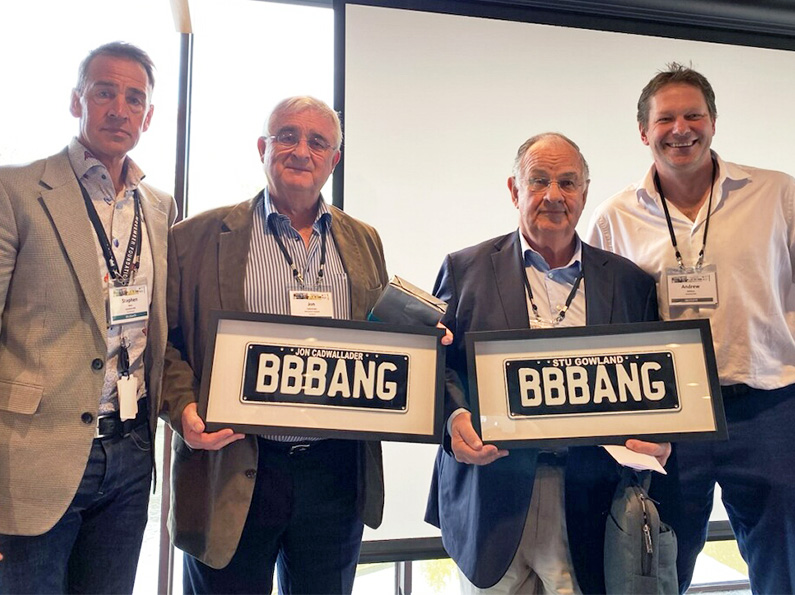
From the “great outdoors to the great indoors”
Celebrating 25 years with Mobile Medical this month, Simon Felton is one of our esteemed medical imaging technologists (MIT). His journey from the vast sheep stations of Central Otago to the high-tech world of radiography is inspiring.
Initially envisioning a future of working on the family farm in Central Otago, Simon spent a year in 1988 working on a beef and sheep station in Walcha, Australia. A trip to Sweden to visit his brother saw him working on a large cropping and pig farming operation for 18 months, where he also met his future wife, Tracey, a fellow New Zealander working as a nanny.
Returning to New Zealand in 1990, the couple married and continued their farming life on a large sheep station in Bannockburn until 1997. It was during this time that Simon discovered his passion for radiography, leading him to transition from the fields of farming to the cutting-edge field of radiography.
“In 1997 at the age of 33, I decided to leave the great outdoors and pursue a new career. What I term going from the ‘great outdoors to the great indoors’”, Simon begins. “ After considering several options of study, radiography somehow stuck. After a visit to Christchurch Radiology in 1996, I applied for the MRT three-year BA in Medical Imaging through Ara Institute (formerly Christchurch Polytechnic Institute of Technology (CPIT)).”
“In my last year of training in 1999, I had my first visit to the mobile lithotripsy unit which was parked outside the ED department at Christchurch Hospital. I left thinking, if a job offer ever came up, I would definitely be applying.”
“As a student I used to work in the holidays at Christchurch Radiology Group and got to meet a lot of the radiologists and staff. This was to be a stepping stone when I qualified, as two months after qualifying I was approached by one of the radiologists and offered a position at Southern Cross Radiology.”
 In 2000 Simon was offered a position on the mobile lithotripsy unit from Dr Stu Gowland, the co-founder of Mobile Medical, who was visiting Christchurch Radiology Group looking to recruit MRTs to work on the mobile unit. “…a lot of stars aligned that led to me working for MMT (Mobile Medical Technology).”
In 2000 Simon was offered a position on the mobile lithotripsy unit from Dr Stu Gowland, the co-founder of Mobile Medical, who was visiting Christchurch Radiology Group looking to recruit MRTs to work on the mobile unit. “…a lot of stars aligned that led to me working for MMT (Mobile Medical Technology).”
The mobile unit treats patients with kidney stones using Extra Corporeal Shock Wave Lithotripsy (ESWL), a non-invasive kidney stone procedure which breaks up stones using a shockwave introduced outside of the body. The key advantages of this method of treatment are that it is non-invasive and patients spends less time in hospital post-operation.
The recovery process for patients is straight forward: They leave the unit following treatment and go to the recovery room where they may spend two to four hours under observation before being sent home. “Most people would return to work within 48 hours unless there were any post-op complications.” Generally, six weeks after treatment, patients are seen by their urologist to have a follow-up review scan (x-ray). They are also sent a text message two weeks post-op and six months post-op, where they can provide feedback about the treatment they received.
“Other procedures, such as ureteroscopy, involve an invasive approach requiring the insertion of specialised equipment through the urethra-bladder and into the ureter. This way stones can be visualised on a camera and treated directly with a laser or lithoclast device that can slowly break the stone into small pieces.”

Although ESWL is non-invasive, it is not for every patient. ESWL is less effective for patients with a larger body habitus, the distance from the skin to the stone must not exceed 180 cm, as this is the maximum focal length of the focused shock wave. ESWL is also less effective on a stone with a high Hu measured from a CT scan because very hard stones do not break easily with ESWL, and a stone overlying a rib or next to a JJ stent “…the shock wave can be deflected or reduced when either are in the shock field.”
Simon says the biggest technology change in kidney stone treatment was removing the bulky bath that patients used to be treated in. Forty-four years ago in 1980, the Department of Urology at Munich University Hospital, Grosshardern campus, performed the first kidney stone treatment using shock waves. Initially, the lithotripter models utilised a water bath to couple the shock waves. Over the following decades, advancements led to the use of water cushions for coupling. Eventually, non-invasive stone treatment became possible with the introduction of a mechanism for three-dimensional stone localisation – a lithotripsy machine that functions in both a fixed or mobile environment. This innovation marked the start of the successful journey of contactless urinary stone fragmentation using shock waves. (credit: Storz website) “The overall concept of producing a shockwave in water that is focused on a kidney stone has remained the same,” Simon says.
As AI continues to advance in healthcare, Simon was asked about its potential impact on medical imaging. He suggested that AI could be instrumental in developing stone tracking. This would minimise the number of shocks that miss the stone target, which often happens due to movement with respiration.
Having worked on the mobile lithotripsy unit as a contractor since 2000, Simon splits his time between working on the unit and Pacific Radiology Group in Christchurch as an MRI Technologist. With an impressive tenure as one of the longest-serving employees, Simon has provided exceptional care to more than 2,900 patients onboard the lithotripsy unit.
He has a deep understanding of the business, from its early days to its current achievements. His journey with Mobile Medical has been marked by his unwavering commitment and a genuine passion for his work. He frequently praises the company for its dedication to patient care and cherishes the strong sense of camaraderie among colleagues. “The great back-up from the office when on the road – whenever there are flight delays, breakdowns and so on, there is always someone to call to help with resolving issues. Working with awesome people who are all dedicated to providing mobile health care to the community and celebrating birthdays with the famous office cake.”
Simon’s story is a testament to how life’s unexpected turns and the alignment of opportunities can lead to fulfilling new paths.

Main photo: Simon featured in The Press newspaper in April 2000.
Pictured top right: Simon standing in the control room in the mobile lithotripsy unit.
Pictured middle: Simon with his fellow colleagues at Mobile Medical. (L-R) James Hayes, MIT; Simon Felton, MIT; Debbie Bourke, MIT; Karen Miller, MIT.
Pictured bottom: Simon celebrates his 25 year anniversary at Mobile Medical at the Christchurch head office.


 We are thrilled to celebrate the 25th anniversary of Simon Felton, a dedicated MIT who has been a cornerstone of our team. That’s a quarter of a century of invaluable expertise, innovation, commitment and probably a lot of coffee!
We are thrilled to celebrate the 25th anniversary of Simon Felton, a dedicated MIT who has been a cornerstone of our team. That’s a quarter of a century of invaluable expertise, innovation, commitment and probably a lot of coffee!









 Jon tirelessly advocated for mobile delivery, believing it could bridge gaps in healthcare access. His relentless promotion and dedication to these concepts have left a lasting legacy, ensuring that quality medical care reaches even the most remote areas. His contributions have truly transformed the landscape of modern healthcare.
Jon tirelessly advocated for mobile delivery, believing it could bridge gaps in healthcare access. His relentless promotion and dedication to these concepts have left a lasting legacy, ensuring that quality medical care reaches even the most remote areas. His contributions have truly transformed the landscape of modern healthcare. “The UK was developing a transportable hospital for rural England; they were these very sophisticated temporary support units/pods that came out of Nottingham. A lot of people visited the company looking at mobile solutions.”
“The UK was developing a transportable hospital for rural England; they were these very sophisticated temporary support units/pods that came out of Nottingham. A lot of people visited the company looking at mobile solutions.” Nevertheless, Jon’s innovative spirit didn’t stop there; he also conceptualised a mobile PET-CT unit, bringing advanced imaging to patients’ doorsteps. An idea that finally came to fruition earlier this year when Mobile Imaging was launched – the Southern Hemisphere’s first mobile PET-CT unit delivering state-of-the-art cancer diagnostics to those outside major metropolitan cities. The service has been rolled out to Rotorua, Palmerston North, Lower Hutt, and Dunedin, with more locations underway.
Nevertheless, Jon’s innovative spirit didn’t stop there; he also conceptualised a mobile PET-CT unit, bringing advanced imaging to patients’ doorsteps. An idea that finally came to fruition earlier this year when Mobile Imaging was launched – the Southern Hemisphere’s first mobile PET-CT unit delivering state-of-the-art cancer diagnostics to those outside major metropolitan cities. The service has been rolled out to Rotorua, Palmerston North, Lower Hutt, and Dunedin, with more locations underway.